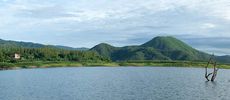Palm Beach County Reclaims Potable Water to Enhance Supply


Given the rapidly growing population, threat of climate change, and tightening supply of potable water, utilities are under pressure to develop resources. Conserving water and implementing technologies like desalination can help, but reclaimed water—capturing, treating, and reusing potable water—is also a proven tactic. To make it work, however, utilities must overcome various obstacles, from handling regulatory uncertainty and choosing optimal treatment methods to solving water quality challenges and beyond.
The state of Florida usually has plenty of water, but that changes in the dry season. Although much of the area's water comes from a shallow underground aquifer, Palm Beach County Water Utilities has developed a capacity of 55 million gallons per day (MGD) of reclaimed water from the Green Cay Phase 1 project. The water is used at the Wakodahatchee Wetlands, golf courses, homeowner associations, and Florida Power and Light. Now, the county is implementing Green Cay Phase 2 to capture an additional water resource.
Essential to a potable reuse program is a clear roadmap. Let's explore the example of Palm Beach County Water Utilities and its partners to demonstrate how others can implement a reclaimed water program. Success depends on competent water labs that can ensure water meets the quality criteria for the intended use.
Defining Reclaimed Water
Reclaimed water is also known as recycled or reused water. Utilities disinfect and treat this former domestic wastewater to remove solids and some impurities, but it's typically still outside the range for drinking water. That's because the water often contains higher levels of salts, nutrients (like nitrogen and phosphorus), and pathogens (like bacteria and viruses), as well as small concentrations of inorganic and organic contaminants.
Reclaimed water can safely be discharged into a stream, wetland, or ocean, but for a more beneficial use, it can be piped back into communities for residential, industrial, and commercial applications. That keeps potable water sources—such as drinking water—from being used for activities like lawn watering and manufacturing processes that don't need drinking water quality.
Crafting a Potable Reuse Project in 7 Steps
Palm Beach County Water Utilities and engineering and construction firm CDM Smith developed the Green Cay Phase 2 potable reuse project using the following seven steps, which your water utility can use as an example when developing your own project:
1. Find Your Bold Idea
Green Cay Phase 1 and the Wakodahatchee Wetlands, a 5-star attraction on Tripadvisor, process a large volume of water and provide recreational activities, such as hiking, picnicking, and birdwatching, for more than 1 million visitors annually. To build on this success, the team envisioned a new water purification facility, park and production wells, and an interactive learning center.
Takeaway: When implementing your own reuse project, take your cue from other projects to create a vision that excites your utility and community about potable reuse and the benefits it can offer beyond increasing supply.
2. Observe Your Water Resource
The team decided to match the quality of Florida's world-famous Silver Springs in terms of nitrogen and phosphorus, color, and turbidity. They carefully reviewed data from the local Southern Region Water Reclamation Facility and identified gaps for water sampling during a pilot test.
Takeaway: Review data from other reuse projects in your region and state and develop the water sampling regime you'll use during a pilot to ensure your utility can properly treat difficult-to-remove contaminants.
3. Reach Out to Key Stakeholders
Palm Beach County chose two guiding project principles for treatment: Meet Florida's full treatment requirements for surface water augmentation and Florida's Class III surface water quality standards for recreational use. The core product and messaging included the following:
- Use advanced technology to replenish groundwater and meet future supply needs.
- Apply innovation, technology, and forward-thinking strategy to water reuse.
- Preserve natural resources.
- Raise awareness and provide educational opportunities about local water resources and conservation.
Takeaway: Identify the water quality standards you want your potable reuse program to meet and the goals you want to achieve in terms of water supply sustainability, optimal water management, leadership, environmental stewardship, and awareness and education.
4. Work Through the Pilot
Florida Water Reclamation Facilities have collected extensive reclaimed water quality and treatment performance data over many years. Over the last 34 years, 18 utilities have piloted treatment projects, including 10 reverse osmosis reuse projects. The team submitted a pilot plan to the Department of Environmental Protection, which approved it with only five months of water characterization instead of the usual 12 months. Pilot testing confirmed the strict water quality limits were met and informed the detailed design.
Takeaway: Review the work of other state and national facilities and develop a pilot plan for wastewater treatment that meets your goal water quality criteria. Be sure you base your plan on a solid understanding of your own facility's water quality over a number of years.
5. Assemble the Design
CDM Smith used advanced virtual design methods to help Palm Beach County visualize the design. Project components included a 12,450-square-foot water purification facility to treat 2 MGD, a 13,000-square-foot education center, a 63-acre park, and two additional production wells and pipelines to capture purified water.
Takeaway: Work with a trusted partner who can help you develop and visualize the project in a way that informs and inspires your stakeholders. Also, think beyond water purification to other amenities your potable reuse project could provide, from education to recreation.
6. Ready for Construction and Commissioning
Groundbreaking on the Palm Beach facility occurred in March 2024 based on the virtual design models. The team is using the latest technology to speed up construction and ease communication.
Takeaway: Rely on advanced construction and communication technologies to enhance effectiveness and efficiency.
7. Take Pride in Water Reuse
Although the project isn't complete yet, the Palm Beach team takes particular pride in the education center and its mission to inspire the public's interest in water purification systems while setting a new benchmark for informal education in the water industry.
Takeaway: Make sure your vision will inform the public about the role your water utility plays and inspire them to take pride in water reuse in your community.
Connecting People to Water and the Environment
Reusing water can help a region meet growing water needs and nurture the next generation of community leaders and water professionals. A highlight of any potable reuse project is the water quality treatment labs, which do the critical work of ensuring the public never has to think twice when turning on the tap or recreating in local waters.






